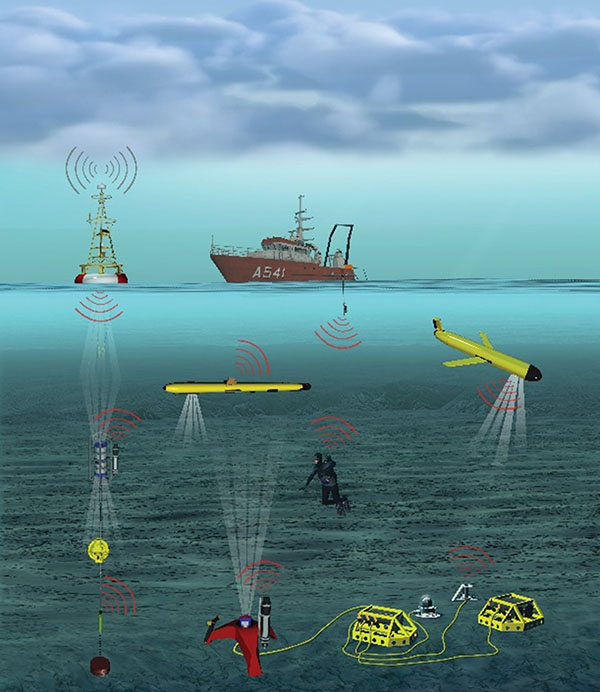

Teledyne Marine continues to redefine the boundaries of underwater autonomy through its integrated suite of technologies. At the core of this innovation is enabling acoustic communication technology from
Teledyne Benthos - Acoustic Modems, Directional Acoustic Transponders (DATs), and the groundbreaking BlueStreamX2 enhancement—a trio that significantly boosts the capability, performance and efficiency of subsea vehicles such as Gliders, Remote Operated Vehicles (ROVs) and Autonomous Underwater Vehicles (AUVs).
Smarter, Faster Underwater Communication
Teledyne Benthos modems, including the ATM, CM, and UCM families, are engineered for full-ocean-depth telemetry and support advanced features such as USBL positioning,
in-band acoustic recording, and high-capacity data logging. These modems can be embedded in subsea vehicles to enable real-time or near-real-time communication with topside operators, even in the most challenging subsea environments.
The BlueStreamX2 enhancement takes this capability to the next level by doubling the acoustic data rate of modems operating in the WideBand C frequency band—from 2400 to 4800 bits per second. This is achieved through advanced transducer design that expands the operating bandwidth from 5 kHz to 10 kHz, enabling faster, more efficient data transmission without sacrificing range or reliability.
Seamless Data Exchange and Command Flexibility
Benthos modems can act as the topside communication hub as well, allowing operators to interact with submerged vehicles without physical recovery. When a vehicle enters the acoustic range, the modem can transmit new mission parameters, retrieve collected data, or re-task the vehicle on the fly. This is especially valuable for long-duration missions or operations in remote or hazardous areas.
 The Benthos Universal Topside System (UTS) is essentially a topside modem in a portable carrying case. Besides the added convenience and versatility, the UTS also includes many diagnostic features to help users characterize the ambient environment.
The Benthos Universal Topside System (UTS) is essentially a topside modem in a portable carrying case. Besides the added convenience and versatility, the UTS also includes many diagnostic features to help users characterize the ambient environment.
Another option is the Benthos Directional Acoustic Transponder (DAT) which adds positioning capabilities on top of standard modem acoustic communication. The DAT provides range, bearing, and elevation information which enables tracking, homing, and location of a vehicle from the surface, or by a vehicle if integrated within.
With BlueStreamX2, these interactions become even more efficient. Operators can offload larger datasets in less time and issue commands more responsively, maximizing mission productivity.
Interoperability Across Platforms
One of the key strengths of Teledyne's approach is interoperability. Benthos modems, UTS' and DATs are compatible across the entire Benthos acoustics product line, and BlueStreamX2 maintains backward compatibility with existing Band C systems. This ensures seamless integration into current fleets and infrastructure, minimizing the need for hardware overhauls.
For example, a glider can acoustically collect data from a stationary sensor node equipped with a Benthos modem and when it surfaces can relay that information to shore via satellite. This networked approach enhances the spatial and temporal resolution of oceanographic data collection while reducing the need for costly ship time.
Conclusion
Teledyne's BlueStreamX2 enhancement, combined with its proven Benthos modems, UTS' and DATs, represents a powerful leap forward in underwater communication. Together, they empower subsea vehicles like gliders and AUVs to operate smarter, faster, and more autonomously, supporting a wide range of applications—from environmental monitoring to defense and offshore energy exploration. As the demands of subsea missions grow, Teledyne's integrated technologies are setting the standard for the future of autonomous marine systems.
